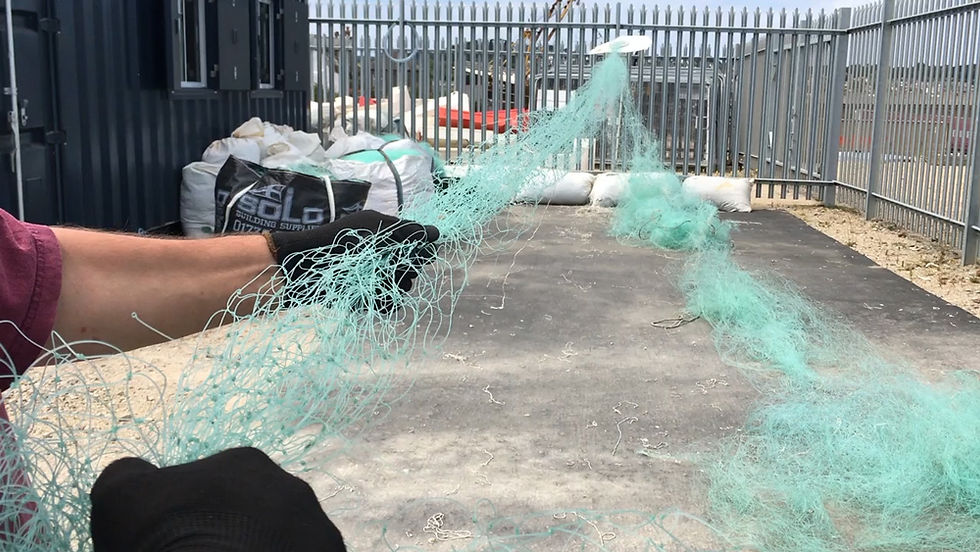Global seafood consumption has more than doubled in the past 50 years, increasing the use of commercial fishing gear that can end up abandoned, lost or discarded in the oceans. These nets can entangle marine mammals, seabirds, and turtles, causing severe harm. According to new research by The Ocean Cleanup, as much as 75% to 86% of all plastic waste in the GPGP was identified as coming from offshore fishing activity. Our mission is to make a difference, find positive ways to clean our coasts and transform this waste material into beautiful designer objects. Recycled ocean plastics can be a step towards creating a sustainable future we all want and need.
We have been recycling abandoned fishing nets, bottles and ropes that we find along the UK coastline and transforming them into our products. When you recycle these materials, collecting and separating them into plastic types is essential. This is because the materials have different melting points and will not form well in the mould if combined. We have often found it tricky to ascertain what plastic is what when separating these materials, until now.
We have recently got access to a Plastell machine which has helped us tell the difference in the plastics we usually find on our beaches. Our friends at Brothers Make were lucky enough to get one and kind enough to share this great tech with us.
Below you will find the six most common nets and ropes we have come across visualised in our Ocean plastics chart. Ideally, get yourself a machine, but some of you may not be able to afford it. Many people worldwide in the Precious Plastic community are interested in solving ocean-plastic pollution. So for those trying to recycle these materials, we thought sharing our findings in an easy chart would be a good idea.
In the video above, you can get a good idea of how I put the processed material into the injection machine and heat it in the barrel before injecting it into my bespoke moulds.
We hope to continue documenting the types of plastics we find so people can identify them quickly and easily. They are mainly PP and HDPE, but I know Cornwall Gill nets are Nylon 6 and have not been documented here yet. Fishy filaments use this type of net in their Porthcurno 3d print filament, so check out their site for material specifications.

The material is beautiful, and I have had some stunning 3D prints of the nylon. I have found the nylon extremely tricky to inject, so I prefer to stick to PP and HDPE for injection.

Because this type of material is so pervasive, we have chosen to focus on recycling it. These nets and ropes are made of different kinds of plastic. In Cornwall, commercial fleets use monofilament nylon nets (a high-grade Nylon 6) in their Gill nets. These nets are set on the seabed and left to fish. Each end is anchored, and the net is held to the seabed by a weighted ‘foot-rope’ and held up by a floating ‘headline. Nets are not supposed to be used during periods of strong tidal flows, so most netters will stop fishing during spring tides as they don't want to lose them. Nevertheless, these nets often get displaced and sadly lost at sea. These lost nets can then continue to fish and are often termed ‘ghost nets’.
We work with our beach cleaning partners at Clean Ocean Sailing and Plastic@bay to collect these nets when they are washed up on our shores. Groups of beach cleaners collect these nets from hard-to-reach coves and beaches. We then clean and process the material before injection moulding it into our Ocean Plastic Plant Pots and other products. Various other types of nets and ropes use different types of plastic, such as HDPE (High-Density Polyethylene) and PP (Polypropylene). These are marked with a number 2 and a number 5, respectively, but it's hard to tell on nets and ropes, which is why the Plastell is such a great gadget! We are very grateful to have seen it in action and hope to get it in our arsenal one day soon.












Kommentare